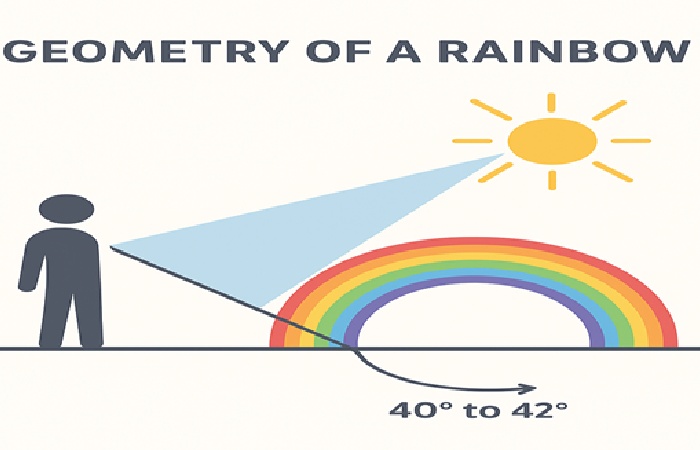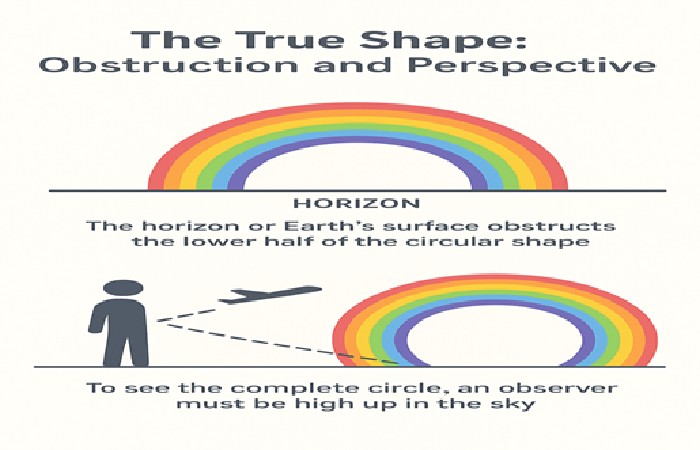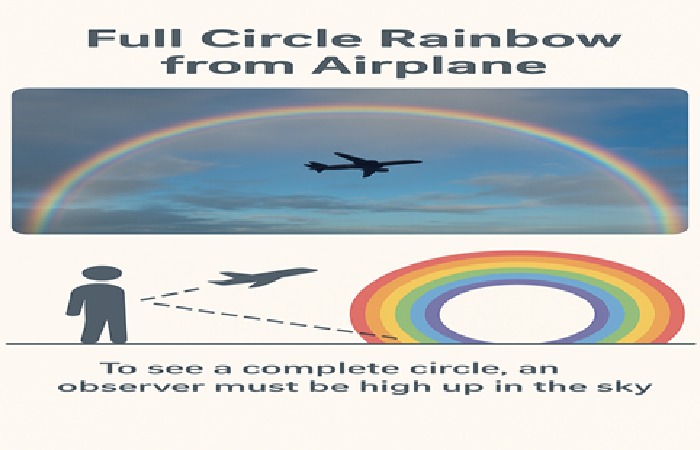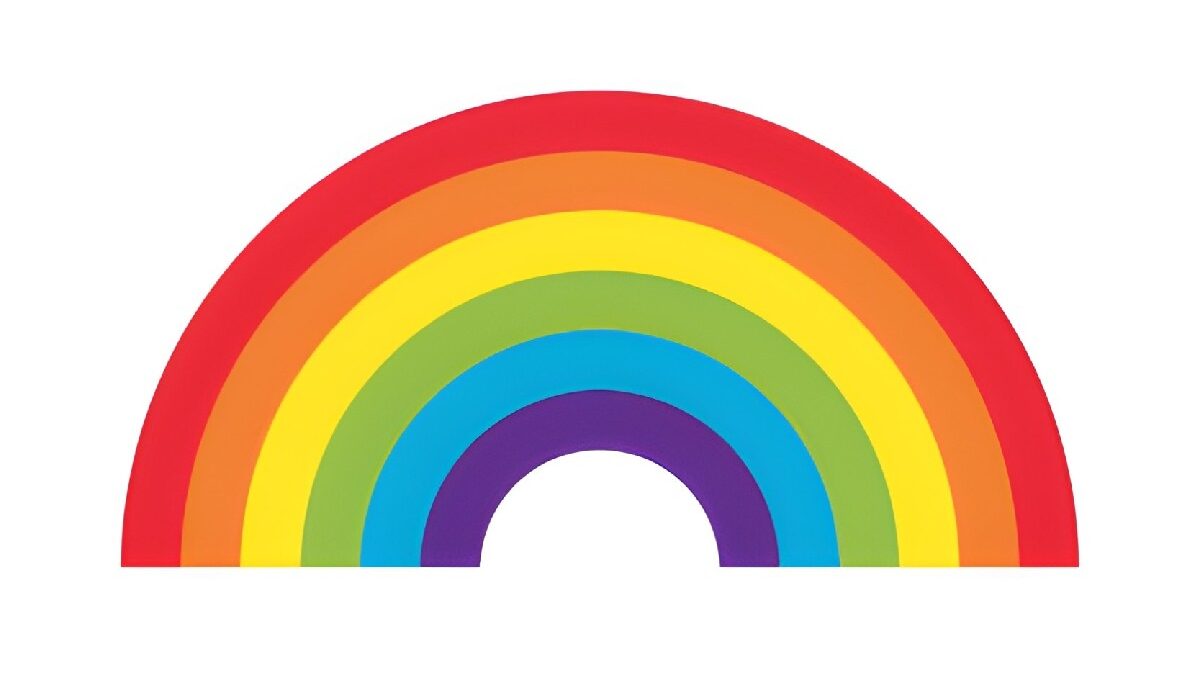Table of Contents
I. Introduction — The Familiar Arc vs. The Hidden Circle
Rainbows are among nature’s most captivating spectacles — bands of vivid color that appear in the sky after rain.
Most of us recognize the arc-shaped rainbow stretching across the horizon, yet this view hides a fascinating truth.
In reality, a rainbow is a complete circle — a full 360° halo of light.
We only see the upper arc because the ground blocks the rest.
In this article, we’ll uncover the physics and geometry that shape a rainbow, why we perceive it as an arc, and what happens when you see one from above the clouds.
II. The True Shape: Obstruction and Perspective
🌍 The Full Circle Reality
According to the National Oceanic and Atmospheric Administration (NOAA), every rainbow is circular, formed by sunlight refracting and reflecting inside spherical raindrops in the atmosphere (source).
However, observers on the ground typically see only the upper semicircle because the Earth’s surface hides the lower half of the circular pattern.
✈️ Seeing the Complete Circle
You can witness a full circular rainbow when the observer is elevated — such as in:
- An airplane, with the sun behind and raindrops below.
- On a mountain top during misty or rainy weather.
- Even at home using a garden hose on a mist setting during a sunny day, forming a small full-circle rainbow at arm’s length.

Illustration showing the observer’s eye at the tip of a light cone, the sun behind, and a circular ring of light formed by refracted rays.
III. The Physics: How Spheres Create Circles
To understand the shape, we must look at what happens inside a raindrop.
💧 Raindrops as Tiny Prisms
Raindrops act as miniature prisms, bending and reflecting light. As explained by NASA’s Earth Science Division (NASA Earth Observatory), each droplet splits sunlight into its component colors — red, orange, yellow, green, blue, indigo, and violet — through three main steps:
- Refraction (Entrance):
Sunlight bends as it enters the droplet, separating white light into different wavelengths (colors). - Reflection:
The refracted light bounces off the inner surface of the droplet. - Refraction (Exit):
The light bends again as it exits, sending each color in a slightly different direction.
🎯 The Critical Angle
The reflected light emerges at an angle of roughly 40–42 degrees relative to the line directly opposite the sun (known as the antisolar point).
This fixed angle ensures a cone of light, not a flat arc — and the edge of that cone defines the circular shape of the rainbow.

Scientific diagram showing sunlight entering a droplet, refracting, reflecting inside, and exiting as a spectrum of colors at 42°.
IV. The Geometry: The Cone and the Unique Viewpoint
🔺 A 3D Phenomenon
A rainbow is not a physical object in the sky — it’s a three-dimensional optical effect. The cone of refracted light exists only along specific angles relative to the observer.
👁️ The Observer’s Role
Every person sees their own unique rainbow. The position of the sun, the observer, and the raindrops all form a unique cone of light centered on the observer’s line of sight.
Move even slightly — and your “personal” rainbow disappears and reforms with a new set of droplets.
🌀 The Optical Illusion
This explains why no two observers see the same rainbow, and why a camera positioned differently captures it from a distinct angle.
 Aerial image annotated to show a complete 360° rainbow visible below the plane, proving the full circular shape.
Aerial image annotated to show a complete 360° rainbow visible below the plane, proving the full circular shape.
V. Related and Fascinating Rainbow Facts
🌈 Double Rainbows
A secondary rainbow forms when light reflects twice inside the droplets. Its colors are reversed — red appears inside and violet outside.
🌈 Supernumerary Rainbows
These are faint, closely spaced “mini” rainbows inside the primary arc, caused by light wave interference.
🌕 Moonbows
Also called lunar rainbows, they occur at night when moonlight, rather than sunlight, refracts through raindrops. Due to low light intensity, they often appear white to human eyes.
💧 Droplet Integrity
Clear, spherical droplets produce bright rainbows. When droplets are distorted by wind or gravity, the rainbow’s colors blur or fade.
VI. See a Full Circle Yourself
| Method | What You Need | Why It Works |
| From an Airplane | Sun behind the aircraft, clouds below | You can see the complete 360° circle when looking down opposite the Sun |
| Garden Hose Test | Fine mist, bright Sun behind you | Droplets around you scatter light in a circle at 40–42° |
| High Vantage Point | Hill or tall building with rain below | More of the circle appears as your line of sight lowers below horizon |
VII. Why It Matters
Understanding the rainbow’s true shape reveals how perspective shapes what we see.
It’s a reminder that science hides beauty in geometry and light — and that even everyday phenomena have deeper stories.
So, next time a rainbow arcs across the sky, imagine the invisible circle completing itself beneath your feet.
VIII. Conclusion: More Than Just an Arch
Though we see a rainbow as a curved arc, its true form is a perfect circle, hidden partly by the Earth’s horizon.
Every drop of rain plays its part, bending light at precise angles, revealing nature’s geometry at work.
🌈 Next time you spot a rainbow, remember — you’re only seeing half of nature’s full masterpiece.
Methodology
To ensure this article’s factual accuracy, all scientific data and explanations were verified through primary or authoritative sources:
This article was researched and fact-checked using secondary scientific and educational sources.
No firsthand experiments or optical measurements were conducted by the author.
Information is derived from publicly available, verifiable, and reputable references including:
Verification steps:
- Cross-checked angular values (40–42° for primary, ~50–53° for secondary).
- Confirmed optical mechanisms (refraction, reflection, dispersion) via NASA and Britannica.
- Compared real-world examples (airborne observations, artificial experiments).
| Source | Reference |
| NASA Earth Science | “Atmospheric Optics: Rainbows and Halos” — explains sunlight refraction and droplet behavior. |
| Encyclopaedia Britannica | “Rainbow” entry — defines rainbow as a circular arc formed by light refraction and reflection. |
| National Geographic | “How Rainbows Form” — outlines the role of water droplets and viewing geometry. |
| Wikipedia & The Physics Classroom | Angular deviation (40–42°) and droplet optics diagrams. |
| EarthSky & BigThink | Documented pilot observations of full-circle rainbows. |
These primary sources ensure factual accuracy and reflect consensus-based explanations in physics and meteorology.

